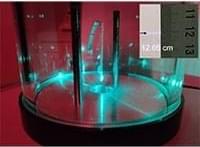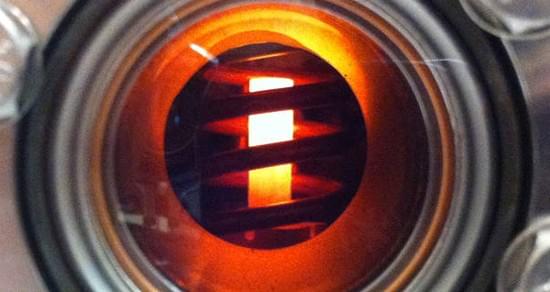A team of researchers used quantum computing and computer learning to describe what is believed to be the interior of a black hole.
See AI describe in text and dozens of pictures the many ways it could wipe us out. See the power of Open AI’s ChatGPT and Stable Platform text to chat and text to art. Does this resemble some of the things already afoot by human characters today? What can we do about it?
Save 1% on GoldBacks from Galactic Greg’s affiliate link (Use coupon code GreenGregs):
See the Special Deals at My Patriot Supply: www.PrepWithGreg.com.
Buy worms directly from my worm farm: https://greengregs.com/
LEHMAN’S Old Time General Store is now with Galactic Gregs!
Find lots of unique solutions for your home, cabin or farmhouse at LEHMAN’S Old Time General Store! Shop now!
https://www.pntrs.com/t/SENJR0ZOSk9DR05OSUxJQ0dMRkpJSg.
Galactic Gregs has teamed up with True Leaf Market to bring you a great selection of seed for your spring planting. Check it out: http://www.pntrac.com/t/TUJGRklGSkJGTU1IS0hCRkpIRk1K
A double-whammy for systematic education since the need for knowledge-workers will decrease at the same time as AI fundamentally questions the need for / uses of “Knowledge Gatekeepers” — establishment academia, lawyers, even actors — the chatterbot classes.
When high school English teacher Kelly Gibson first encountered ChatGPT in December, the existential anxiety kicked in fast. While the internet delighted in the chatbot’s superficially sophisticated answers to users’ prompts, many educators were less amused. If anyone could ask ChatGPT to “write 300 words on what the green light symbolizes in The Great Gatsby,” what would stop students from feeding their homework to the bot? Speculation swirled about a new era of rampant cheating and even a death knell for essays, or education itself. “I thought, ‘Oh my god, this is literally what I teach,’” Gibson says.
But amid the panic, some enterprising teachers see ChatGPT as an opportunity to redesign what learning looks like—and what they invent could shape the future of the classroom. Gibson is one of them. After her initial alarm subsided, she spent her winter vacation tinkering with ChatGPT and figuring out ways to incorporate it into her lessons. She might ask kids to generate text using the bot and then edit it themselves to find the chatbot’s errors or improve upon its writing style. Gibson, who has been teaching for 25 years, likened it to more familiar tech tools that enhance, not replace, learning and critical thinking. “I don’t know how to do it well yet, but I want AI chatbots to become like calculators for writing,” she says.
Gibson’s view of ChatGPT as a teaching tool, not the perfect cheat, brings up a crucial point: ChatGPT is not intelligent in the way people are, despite its ability to spew humanlike text. It is a statistical machine that can sometimes regurgitate or create falsehoods and often needs guidance and further edits to get things right.
Our monthly livestream Q&A session. Join us on January 29, 2023, at 4pm EST, Sunday, and get your questions about the channel and episodes on chat to be answered!
Support the stream: https://streamlabs.com/isaacarthur.
Catch the audio-only show on Soundcloud: https://soundcloud.com/isaac-arthur-148927746
Visit our Website: https://www.isaacarthur.net.
SFIA Discord Server: https://discord.gg/53GAShE
Support us on Patreon: https://www.patreon.com/IsaacArthur.
Facebook Group: https://www.facebook.com/groups/1583992725237264/
Reddit: https://www.reddit.com/r/IsaacArthur/
Twitter: https://twitter.com/Isaac_A_Arthur on Twitter and RT our future content.
Music Courtesy of Epidemic Sound http://epidemicsound.com/creator
Optical pulling is an attractive concept due to the counterintuitive feature, the profound mechanism underneath and promising applications. In recent ten years, optical pulling of micro-nano objects have been fully demonstrated. However, optical pulling of a macroscopic object is challenging. Herein, laser pulling of a macroscopic object is presented in rarefied gas. The pulling force is originated from the Kundsen force when a gauss laser beam irradiates a macroscopic structure composed of the absorptive bulk cross-linked graphene material and a SiO2 layer. A torsional pendulum device qualitatively presents the laser pulling phenomenon. A gravity pendulum device was used to further measure the pulling force that is more than three orders of magnitudes larger than the radiation pressure. This work expands the scope of optical pulling from microscale to macroscale and provides an effective technique approach for macroscopic optical manipulations.
In the meetings, Altman told policymakers that OpenAI is on the path to creating “artificial general intelligence,” a term used to describe an artificial intelligence that can think and understand on the level of the human brain.
The OpenAI CEO is talking to members of Congress about the uses and limits of the artificial intelligence tool that’s all the rage.
Nuclear thermal propulsion and the rotating detonation rocket are two new engine technologies NASA hopes to use to get to Mars and further.
To Mars, nuclear rockets can cut the time in half. And for in-space propulsion, NASA demonstrates a fast-speed rotating detonation rocket.
Chinese scientists in a 10-year study found that people who adhered to the special six rules, the risk of dementia decreased by 90%. Even with a genetic predisposition to Alzheimer’s disease. The study involved 29 thousand people over 60 years of age, who were divided into three groups.
A developer’s new best friend? ChatGPT is up with the best when it comes to automatically debugging code. But whether it saves developers’ time or creates more work remains to be seen.
Researchers have found that some asteroids that are largely made from small pieces of rubble could be very difficult to deflect if one were to ever hurtle towards Earth, a terrifying finding that could force us to reconsider our asteroid defense strategies.
It’s an especially pertinent topic considering NASA’s recent successful deflection of asteroid Didymos by smashing its Double Asteroid Reduction Test (DART) spacecraft into it last year, a proof of concept mission meant to investigate ways for humanity to protect itself from asteroid threats.









